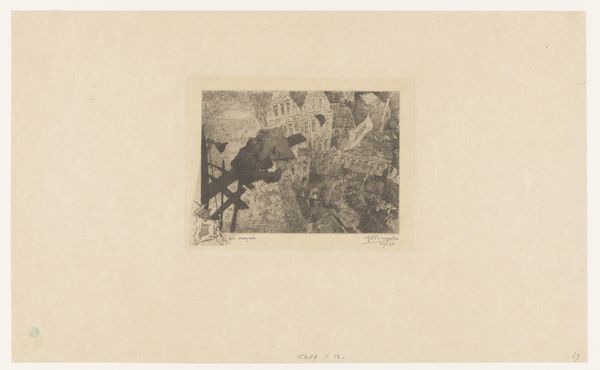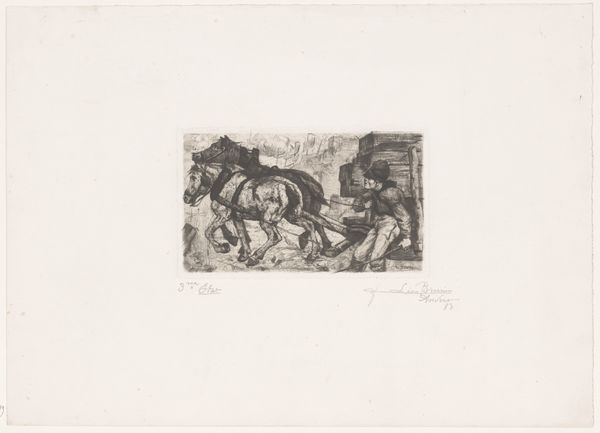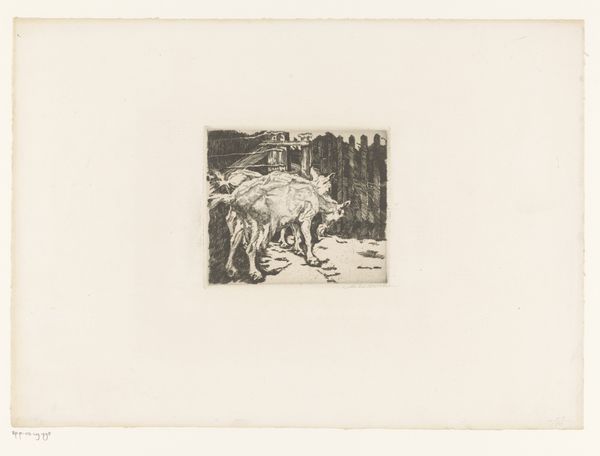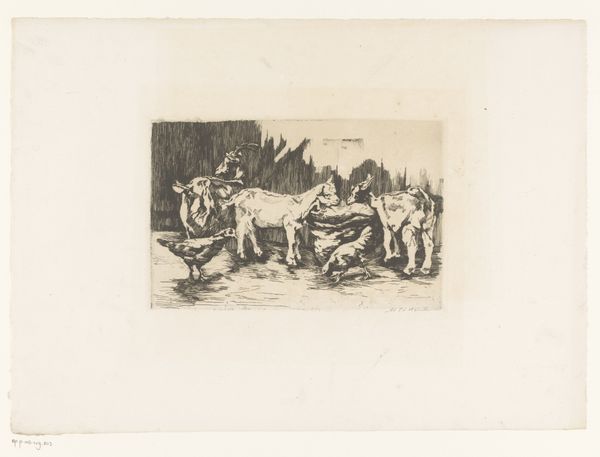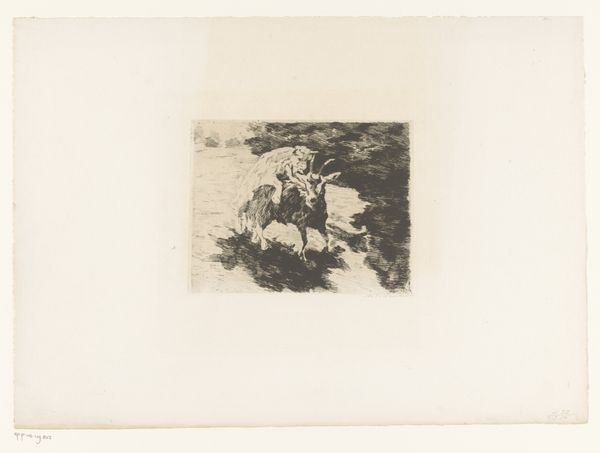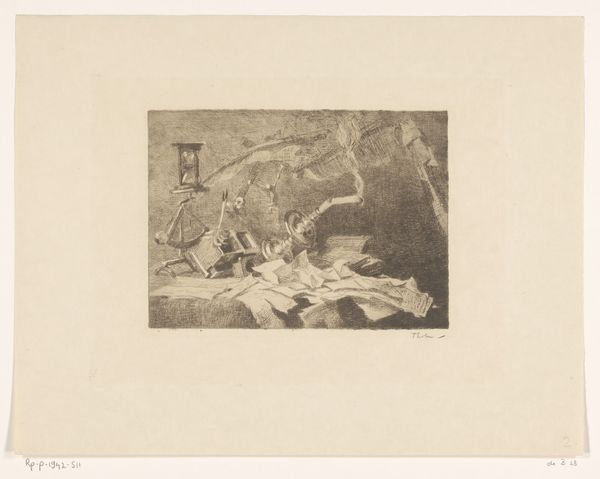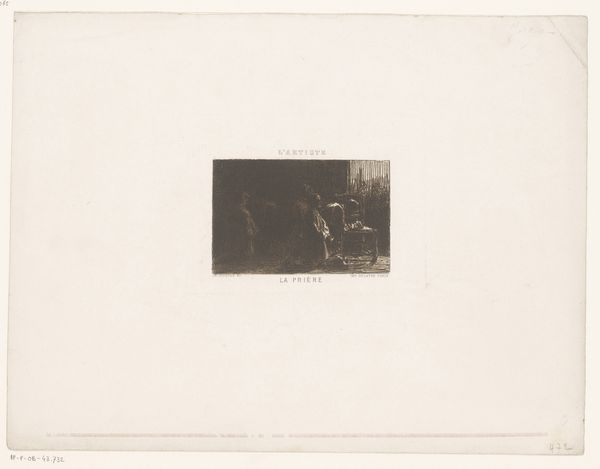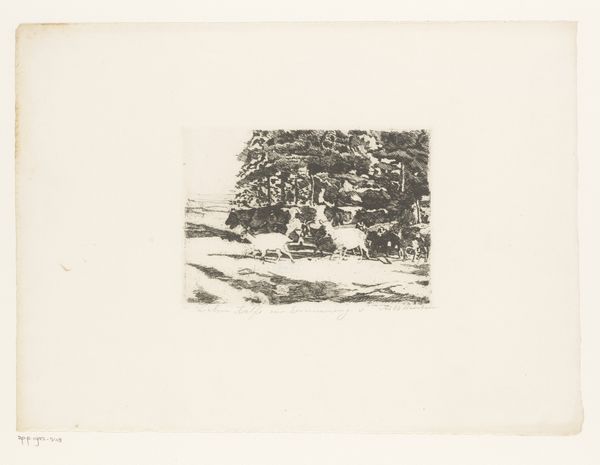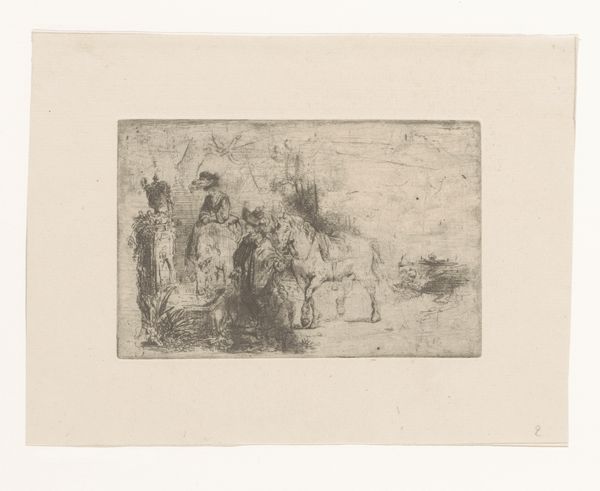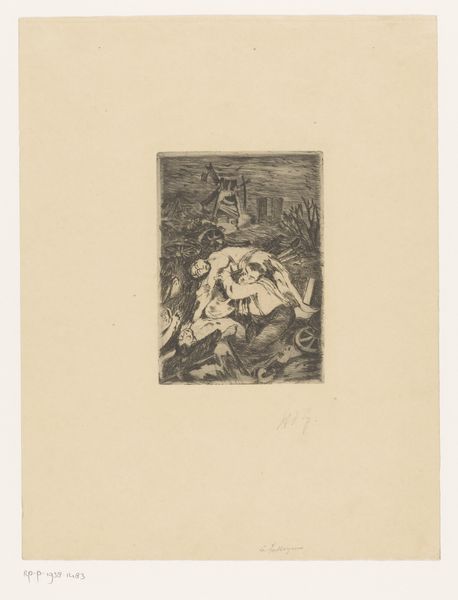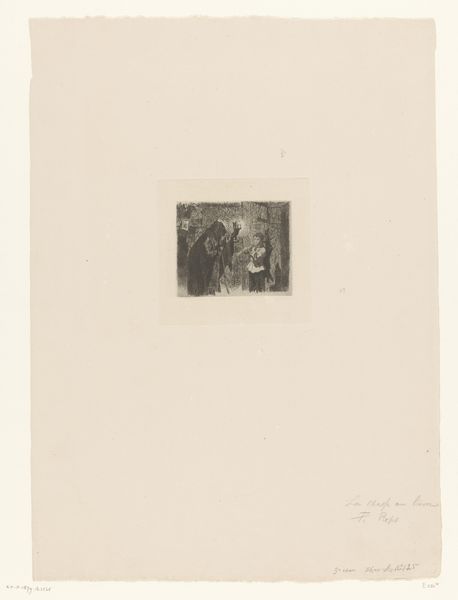
print, etching
#
aged paper
# print
#
etching
#
pencil sketch
#
old engraving style
#
landscape
#
realism
Dimensions: height 129 mm, width 209 mm
Copyright: Rijks Museum: Open Domain
Curator: Well, here we have "Kudde geiten" – "Herd of Goats" – an etching produced sometime between 1879 and 1932. It's currently part of the Rijksmuseum collection and is credited to Adolf Eduard Herstein. Editor: It’s very… monochromatic. The composition feels a bit dense, all huddled together. You can feel the wool, the bodies pressed against each other in that limited space. There’s almost a tangible weight to it, and something unsettling in the lack of breathing room. Curator: Etchings were often considered a readily available art form, fitting into broader debates around accessibility and artistic production in the late 19th and early 20th centuries. Herstein would have been making his art in the long shadow of these discourses, right? Editor: Exactly. Think about the labour involved. Each line, each mark carefully etched into the metal. It’s not just representation; it’s a material record of artistic work and a reproductive technique for broadening dissemination. The mass producibility changes its status. Were these then to be sold, given away, or treated as currency somehow? Curator: I think that also makes it interesting when you consider the choice of subject matter – goats! These aren't the idealized landscapes of, say, the Hudson River School. It’s a realistic and accessible image of labor and livelihood. The very materiality of the print speaks to that. Editor: Absolutely. It's about the tangible aspects of survival, right? Not romantic landscapes but something more like real conditions on a Dutch farm at the time. Curator: Yes, it becomes an exploration of realism. What does realism mean when an artist reproduces life so meticulously yet using an abstract process? This work then creates space for discussion regarding cultural values and societal structure. Editor: For sure. It feels very different knowing that, when previously I saw it as some blurry, old print, all cramped, claustrophobic and dark. Curator: And that's the great thing about looking closely at art isn’t it? The way material production impacts a work’s cultural and historical context. Editor: Yes! And vice versa!
Comments
No comments
Be the first to comment and join the conversation on the ultimate creative platform.

